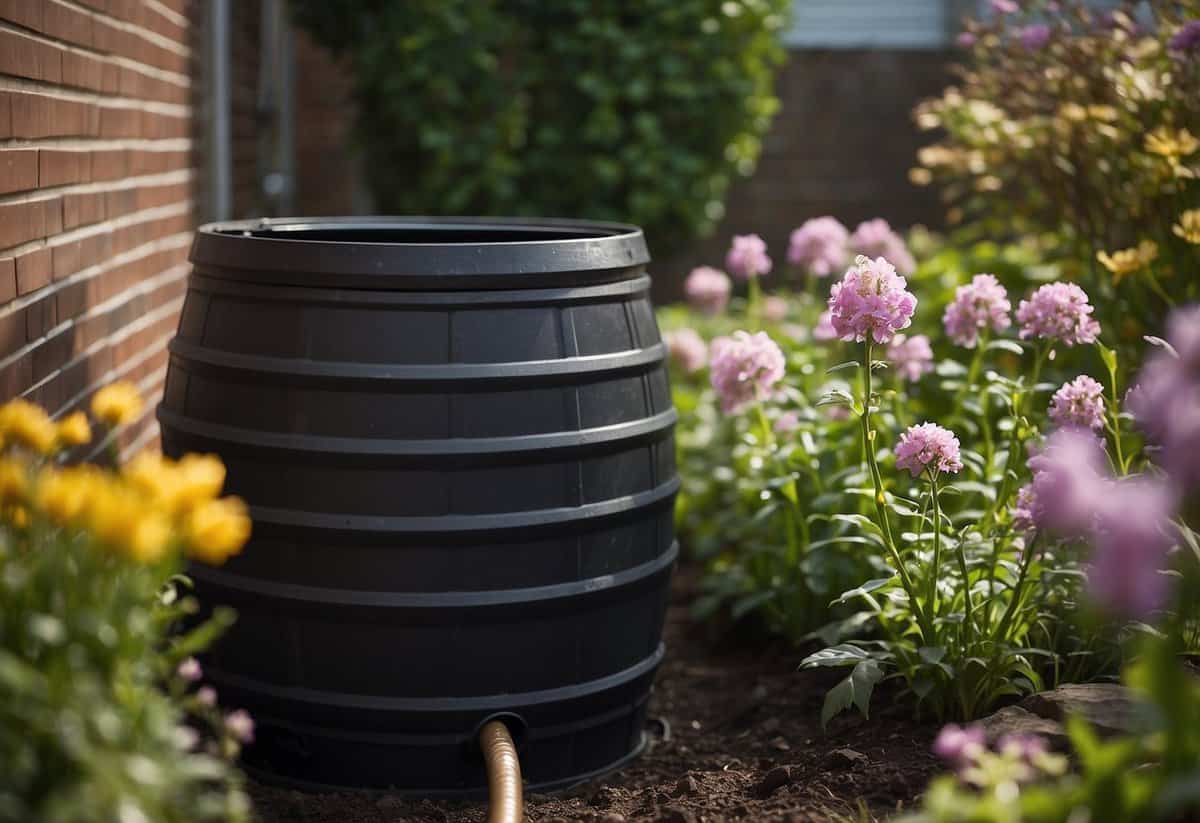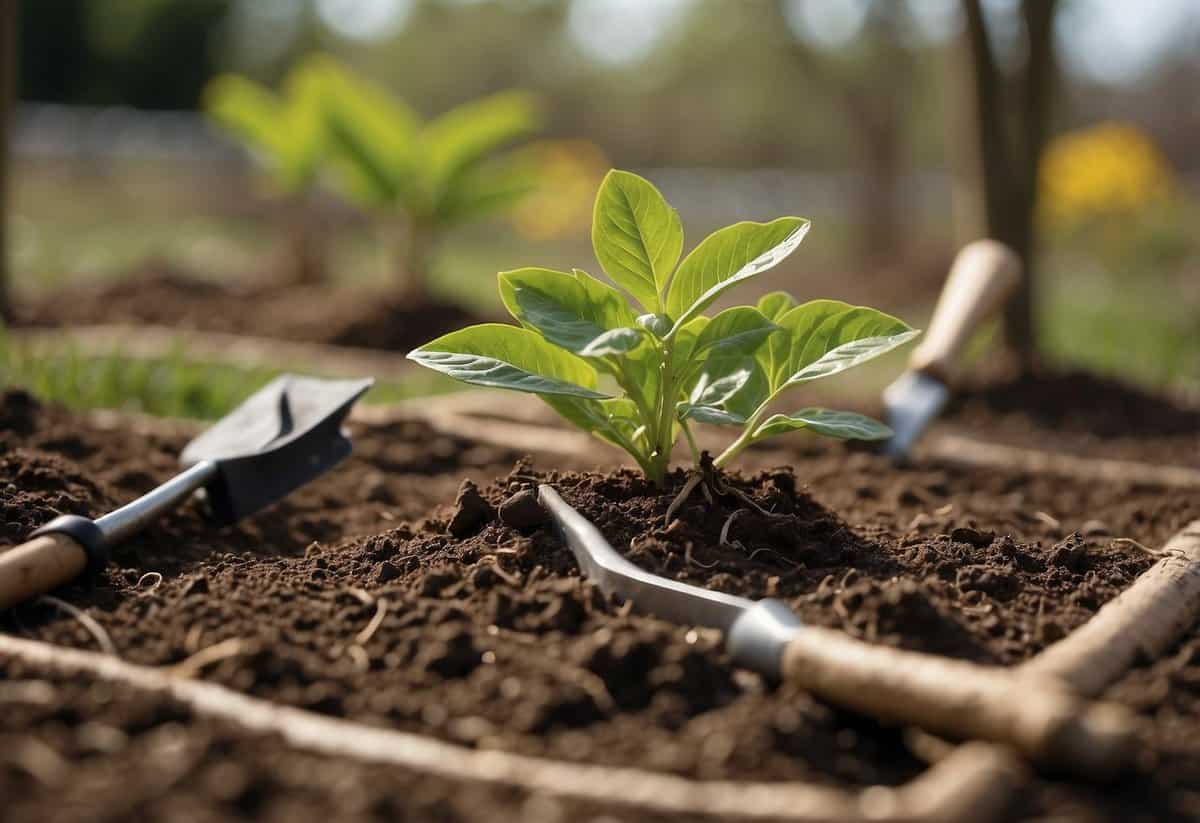April Garden Tips: Easy Ways to Refresh Your Spring Garden
April is a wonderful time to get your garden in shape for the growing season ahead. As the weather begins to warm up, you can start preparing your soil, planting seeds, and taking care of your plants to ensure a bountiful harvest.

What should you do in April to get your garden ready? From planting veggies and herbs to pruning trees and shrubs, there are plenty of tasks that will keep you busy. By following some simple tips, you’ll be well on your way to a thriving garden this spring.
1) Start seeds indoors

April is a great time to start seeds indoors. Gather your seeds and supplies, such as seed trays, a good seed starting mix, and labels.
Fill your trays with the seed starting mix and sow your seeds. Be sure to label each tray with the seed type.
Keep your seeds moist and warm. Use a heat mat if needed to maintain a temperature between 65-75°F.
Provide plenty of light using grow lights or placing trays near a sunny window.
Good air movement is important too. You can use a small fan to help prevent disease and rot.
2) Prepare Garden Beds

Start by cleaning up any leftover debris from winter. Remove dead plants, leaves, and weeds.
Next, enrich the soil by adding compost or well-rotted manure. This boosts nutrients and improves texture.
If you haven’t done a soil test recently, now’s a good time. Knowing whether you need to add lime or fertilizers helps create the best growing environment.
If needed, till the soil to break it up. This promotes root growth and improves drainage.
3) Prune Roses

Pruning roses helps them grow healthier and bloom more. Start by removing any dead branches or canes. Dead wood usually looks brown, while live wood is green.
Next, trim away any broken or unhealthy branches. Prune these back to healthy wood to keep the plant strong. Remove any branches that cross through the center of the plant to improve air circulation.
For the best results, make your cuts about 1/4″ to 1/2″ above an outward-facing bud eye. This helps new stems grow outward, not inward. Make the cuts at a 45-degree angle to allow water to run off.
4) Clean Gardening Tools

Cleaning your gardening tools is important for keeping them in good shape. Start by removing loose dirt and mud with a soft brush or cloth. For tougher spots, use a stiffer brush or metal scraper with water.
Next, disinfect your tools to kill bacteria and fungi. Mix two cups of chlorine bleach with one gallon of water, submerge the tools, and let them soak for 10 minutes. Rinse well and dry completely with an old cloth to prevent rust. Regular cleaning ensures your tools last longer and work better.
5) Plant cool-season crops

April is the perfect time to plant cool-season crops in your garden. These crops thrive in the mild temperatures of early spring.
Consider planting leafy greens like lettuce and spinach. They do well even when the weather is still a bit chilly.
Root vegetables such as carrots and radishes are also excellent choices. They can handle cooler temperatures and grow quickly.
6) Divide perennials

Spring is a great time to divide your perennials.
Check for plants with a ring of foliage around a dead center; that means it’s time.
Use a spade or fork to lift the plant out gently. Separate roots with your hands or a knife.
Replant the healthy sections to keep your garden vibrant. For more details, visit Garden Gate.
7) Install Rain Barrels

Rain barrels are a great way to collect water for your garden. They capture rainwater from your roof and store it for later use.
Start by choosing a spot near a downspout. You can improve water flow by elevating the barrel.
To install, clean the barrel, remove the downspout, and attach the spout.
Rainwater is perfect for watering plants and helps save on your water bill.
8) Add Compost to Soil

Adding compost to your garden soil in April helps your plants get the nutrients they need. Start by sprinkling the compost on top of the soil. You don’t need to mix it in deeply; just a thin layer will do.
Use a rake to spread the compost evenly. This ensures it settles nicely and benefits all your plants. Compost adds valuable nutrients and keeps the soil from compacting. For lawns, a light layer can even fix bare spots.
Remember, compost is great for all garden areas, whether you have flowers, veggies, or trees. Always aim to keep your soil healthy and nutrient-rich.
9) Plant bare-root trees

Planting bare-root trees in April is a great idea. Start by soaking the roots in water for three to six hours. This helps rehydrate them.
Dig a hole that’s wider than you think is necessary. The roots need space to spread out without bending or breaking.
Place the tree in the hole with the trunk flare even with the soil surface. Backfill with soil and firm it around the roots.
Water the newly planted tree thoroughly. This helps settle the soil and remove any air pockets. Keep the area around the tree free of grass and weeds for best results.
10) Mulch Flower Beds

Mulching your flower beds helps keep weeds at bay and retains moisture. Aim for a mulch depth of around three inches to get the best benefits.
Wait until the ground has warmed up in spring before you start mulching. Applying mulch too early can cool the soil and hinder plant growth.
Use organic mulch for best results. It can be composted later, enriching the soil.
Preparing Your Soil

Getting your soil ready in April sets the stage for a thriving garden. Focus on testing soil pH levels and adding organic matter to enrich and balance your garden bed.
Testing Soil pH Levels
Start by checking the pH level of your soil. Soil pH affects how well plants can take up nutrients. Most plants do best in soil with a pH between 6.0 and 7.0. Use a soil pH test kit from your local garden store or conduct a soil test through a local extension service.
A soil test tells you whether your soil is acidic, neutral, or alkaline.
-
Acidic Soil (pH below 6.0): Add lime to raise the pH.
-
Alkaline Soil (pH above 7.0): Add sulfur or peat moss to lower the pH.
Retest the soil every few years to make sure it stays in the right range for your plants.
Adding Organic Matter
Adding organic matter improves soil structure, drainage, and nutrient content. Materials like compost, manure, and leaf mold work well. You can buy compost from garden centers or make your own by recycling kitchen scraps and yard waste.
Spread a 2-3 inch layer of compost over your garden bed and mix it into the top 6-12 inches of soil. This enriches the soil and encourages beneficial organisms like earthworms, which help aerate the soil.
You can also use well-rotted manure, but be sure it’s fully composted to avoid burning your plants. If you prefer to use leaves, chop them up before adding to speed up decomposition.
Selecting The Right Plants

When planning your garden in April, it’s crucial to choose the right plants. Focus on selecting species that thrive in your climate and grow well together.
Choosing Climate-Appropriate Species
Your local climate is a key factor in determining which plants to grow. In warmer regions, you can start sowing seeds of warm-season veggies like tomatoes, peppers, and eggplants. For cooler climates, it’s best to direct sow cool-season crops such as broccoli, cauliflower, and onions.
Pay attention to the plant hardiness zones. These zones help you understand which plants are most likely to thrive in your area. In zones 5-9, April is an ideal time to plant roots and greens. Frost-sensitive plants should be started indoors and transplanted once the danger of frost has passed.
Companion Planting Tips
Companion planting is a method where you plant different species close together to benefit each other. This can help improve growth and reduce pests. For example, planting basil near tomatoes can improve the flavor and growth of the tomatoes and repel pests like aphids.
Another good example is planting marigolds near vegetable crops. Marigolds repel nematodes and other pests that can harm your veggies. Also, beans and corn make a great pair. Beans fix nitrogen in the soil, which benefits the corn, while corn provides support for the beans to climb.







